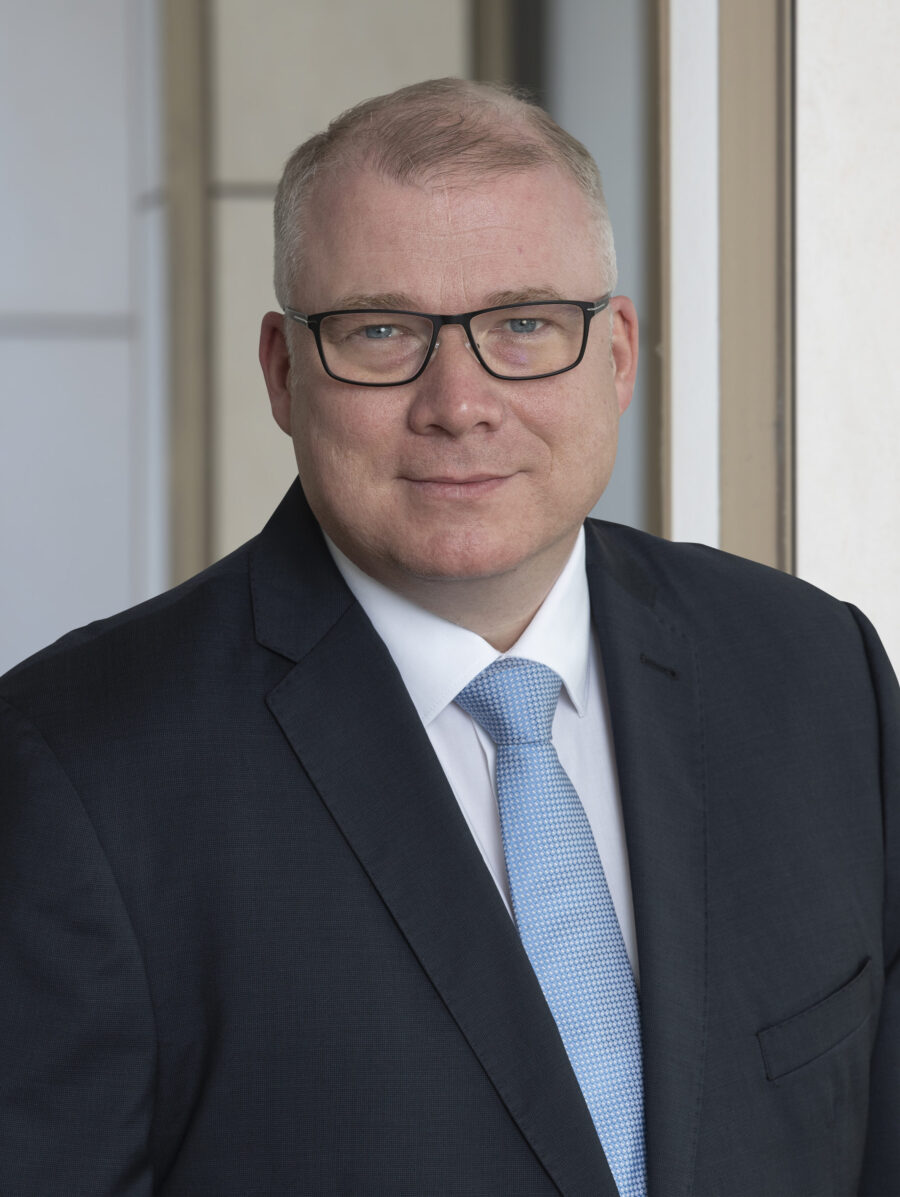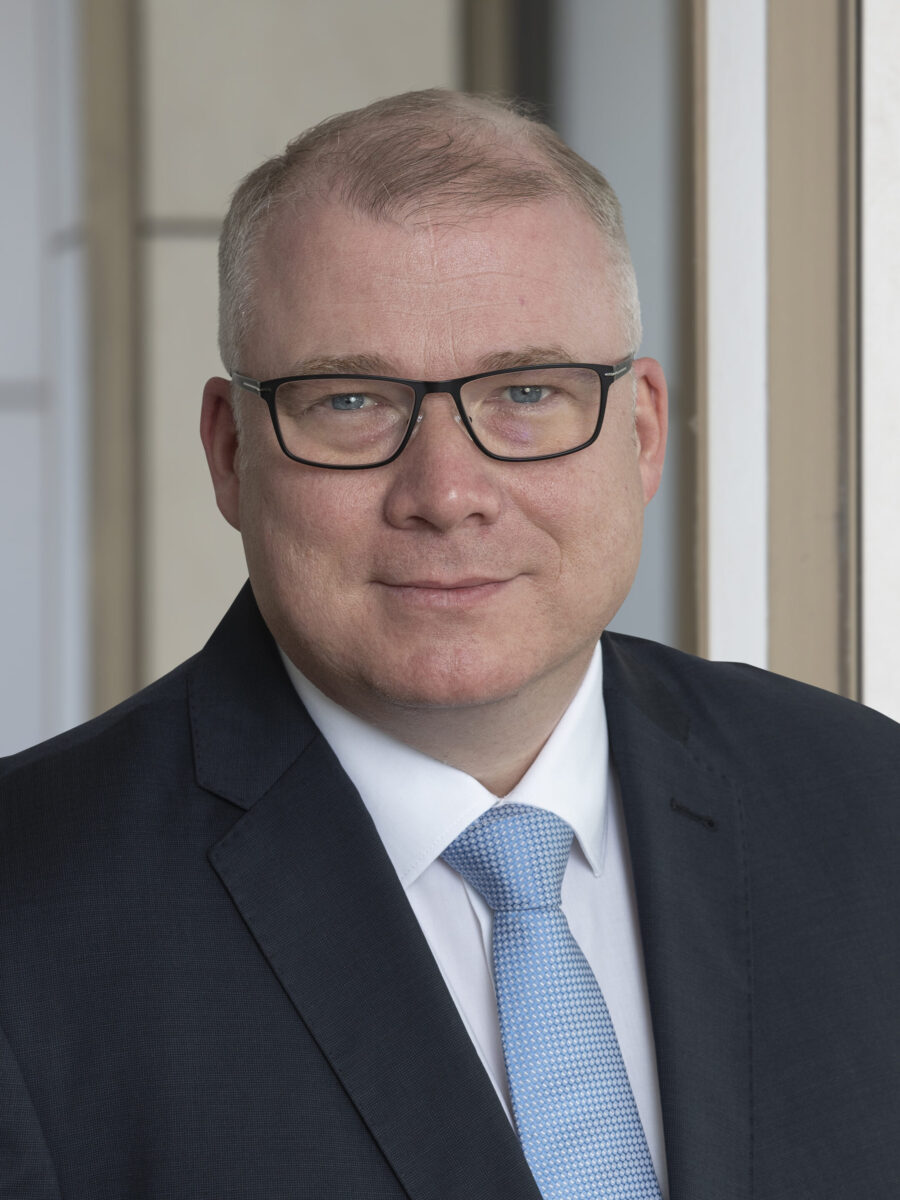
Mr Stern, you have been a portfolio manager for more than 23 years, focusing on government and corporate bonds and short-term bonds in the euro area. What fascinates you about your work?
The complex and multi-layered nature of bond markets fascinates me. In addition, the number of factors to be considered in bond management is more complex compared to other asset classes. For example, topics such as the overarching credit rating, sector and maturity structure, and country and currency risks have to be considered against the background of expected economic and political developments and under the influence of central banks. Once the basic strategic framework is in place, the issuers and their creditworthiness must be analysed and the appropriate bonds added to the portfolio.
What does your day-to-day work look like in concrete terms?
We continuously monitor and evaluate the current news situation and developments in the European and US bond markets as well as the issuers in our investment universe. Based on our risk systems, we determine whether there is a need for action with individual issuers or in the overarching maturity and credit rating management. Then we take a look at the new issue business. They often offer a premium over outstanding bonds of the same issuer or other issuers in the same industry with similar credit ratings. The rest of the day is dominated by analytical topics, such as credit assessment through dialogue with issuers. We also focus on the appropriate tactical and strategic direction and how we can best implement it in our client mandates, taking into account individual requirements. In addition, we are constantly developing our investment processes and analysis tools and regularly attend client meetings.
Interest rates are back, and bonds are in the focus again. What can you earn with shorter-dated euro bonds at the moment, and where are the risks? And what does the inverse yield curve mean for investors?
In the euro bond segment, we currently have a special situation in which short-dated bonds have a significantly higher yield than their long-dated counterparts. While the short end is essentially shaped by current inflation and central bank policy, the long end is rather dominated by long-term inflation expectations. A similarly pronounced inversion of the yield curve was last observed after the German reunification.
Investors who prefer a rather short-term interest rate risk are therefore benefiting from the current situation. Depending on the risk premium and the bond sector, yields of between 3-5% percent can be achieved with a good credit rating, ie in the investment grade sector. However, the real interest rate is currently still negative. In addition, there is a risk that if the yield curve normalises and key interest rates fall, reinvestment could be at significantly lower interest rates.
Investors who currently opt for a longer-term alternative on the bond market are also currently exposed to negative real interest rates. Over the investment horizon, however, the chance of a positive real return increases. In the medium term, a level of inflation is again emerging that is below the yields currently achievable on the bond market. Moreover, the question of reinvestment will only arise in a few years. Until then, investors benefit from a currently attractive entry yield and possible higher price gains on their bond investment in the event of future yield declines.
How do the funds you manage differ from one another? What do you specifically look for when selecting bonds?
The funds we manage differ in their investment horizon. The Berenberg Euro Floating Rate SGB, for example, covers an investment horizon of three to twelve months. It focuses on bonds whose interest rates are largely dependent on the development of money market interest rates. The Berenberg Euro Enhanced Liquidity is suitable for investors with a short- to medium-term investment horizon. It has a higher expected value than fixed-term deposits and participates in the development of credit risk premiums and short-term capital market interest rates. In addition, we actively manage the duration. Our most recent product is the Berenberg Euro Target 2028, which was launched in 2023. The fund is a classic defined term fund with a final maturity in mid-2028. The investment horizon is five years.
The target return of the new Berenberg Euro Target 2028 defined term fund is between 4.5-5% percent before costs per year. What distinguishes a defined term fund?
Defined term funds are a good solution for investors who want to combine the payoff profile of a bond with the advantages of a broadly diversified portfolio investment. They are structured in such a way that all bonds have a final maturity within a predefined maturity – for example in 2028. The bonds are generally intended to be held until final maturity and the portfolio turnover is kept low. At the end of the maturity, the bonds are redeemed together with the final coupon payments. Investors with smaller investment amounts thus get a broadly diversified portfolio and for institutional investors the accounting effort is noticeably reduced compared to individual investments.
What are the special features of the Berenberg Euro Target 2028 Fund?
The Berenberg Euro Target 2028 offers investors the opportunity to secure the current interest rate and spread environment in the medium term and to preserve the chance of a positive real return for the next five years. It is broadly diversified, plannable and clearly structured. In the fund portfolio, we focus on euro-denominated corporate and financial bonds with a maturity until the end of 2028 and invest predominantly in investment-grade bonds. We deliberately avoid subordinated bonds, bonds with maturities beyond 2028 and foreign currency bonds. In addition, our investors can benefit from ongoing monitoring of the new issue markets during the term. We identify attractively valued new issues with a final maturity in 2028 and include them in the fund. As a rule, the bonds in the fund are to be held until final maturity. However, the fundamental situation of individual issuers and bonds may deteriorate in the meantime. In this respect, it is important to recognise these at an early stage and to act decisively. The central element of the Berenberg Euro Target 2028 is therefore our risk management.
How have the markets changed over the last few years? Why do you see opportunities in Asia right now? Where else do you see opportunities?
The current cycle of rate hikes in Europe is coming to an end, and growth concerns may increasingly become the focus of the ECB. We are probably also close to the highs in yields in this cycle, and it is not unlikely that yields could fall again in the coming quarters. Credit spreads remain attractively priced and are already pricing in an economic slowdown to some extent. The combination of both factors, ie attractive credit risk premiums plus high risk-free interest rates, shows that it is exciting to consider investing in the bond sector right now.
Our interview guest

Felix Stern
Felix Stern joined the Asset Management division of Berenberg in 2000 as a fixed income portfolio manager. Currently he is heading the fixed income selection team within the Asset Management and is responsible for institutional mandates. As a senior portfolio manager he is responsible for the selection of corporate and financial bonds as well as short-term bond market investments. He is also the lead manager for several of Berenbergs institutional mutual funds. Prior to joining Berenberg, he worked several years for the Market Research department of British American Tobacco, Germany. Felix is a CCrA - Certified Credit Analyst (DVFA) and also has a German Diploma in business economics from the Fernuniversität in Hagen.



